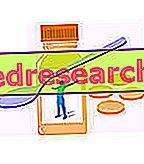Related articles: Bruxism
Definition
Bruxism consists of excessive clenching or grinding of the teeth. The disorder, in particular, consists of an involuntary rubbing of the teeth of the upper arch against those of the lower arch; the act also leads to tighten the jaws with force.
Bruxism occurs predominantly during night rest and depends on the involuntary contraction of the muscles involved in chewing. These rhythmic movements can be repeated several times during the night and usually last a few seconds.
The factors that promote the disorder include defects of dental occlusion (malocclusion), incorrect posture, pain related to teething (in children) and any conditions of stress and emotional tension.
Most common symptoms and signs *
- Dry mouth
- Burning to the tongue
- Sensitive Teeth
- Neck pain
- Jaw pain
- Gum pain
- Pain associated with chewing
- Facial pain
- Tingling in the head
- Retired Gums
- Toothache
- Headache
- Dental malocclusion
- Teeth mobility
- Nervousness
- Otalgia
- Drowsiness
- trichodynia
- Wear of teeth
Further indications
Bruxism leads to abrasion and progressive wear of dental crowns. In turn, damage to tooth enamel causes hypersensitivity to heat, cold and contact with the bristles of the toothbrush. Moreover, it facilitates the onset of caries and microfractures.
In the case of bruxism, a feeling of dryness in the mouth and soreness of the masticatory muscles, often associated with pain in the jaw, neck and ears, can occur at morning awakening. Teeth grinding can sometimes be noisy: the subject may not be aware of it, but noise may be perceived by family members who are close to him.
Bruxism often causes several other symptoms, such as headache, irritability, daytime sleepiness and pain to open the mouth. If neglected for a long time, it can also cause serious damage to the dental apparatus: it makes the dental elements mobile and can cause the recession of the gums. Furthermore, when worn, the teeth become flat and sharp, and can cause small lesions on the tongue and cheeks. The treatment of bruxism consists in the use of oral devices (bite), which, interposed between the dental arches, are useful to prevent occlusal contact. At the same time, these devices protect tooth enamel and promote a mandibular realignment.



